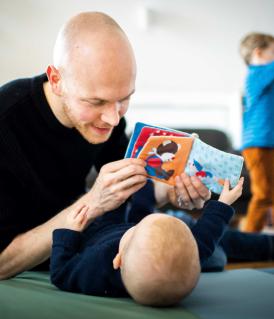With a family, on their own or with others: how people live in Germany

New living arrangements are shaping German society. Even in the individualised and highly mobile world of the 21st century, however, the family still plays a central role. According to the “Monitor Familienforschung” (Family Research Monitor), three quarters of the population feel welcome as a family, while nearly half of parents regard Germany as a (very) family-friendly country.
Family or single life - which different living arrangements are there in Germany?
At the same time, ideas are changing about what a family typically looks like. Less than half the people in Germany live as part of a family unit. Despite a decline in traditional family structures, married couples with children under 18 were still the most common family form in 2024, making up nearly 70 percent of family units. There were nearly 350,000 marriages in 2023. Since 2005, the divorce rate has been gradually falling, with just under 130,000 marriages ending in divorce in 2024. There were around 41,000 new marriages between German and foreign citizens in 2023.
How many single parents live in Germany?
The number of children born to cohabiting unmarried parents is growing significantly. Today, the parents are unmarried in 10 percent of the 11.8 million families with children under 18. 24 percent are single parents, most of them women. Single parents are particularly at risk of experiencing poverty. According to the Family Report, the poverty risk for single mothers is roughly three times higher than for mothers with partners.
How many same-sex partnerships are there in Germany?
There were more than 8,800 new same-sex marriages in Germany in 2024. In 2017, the Bundestag had passed legislation to provide “marriage for all”. Among other things, this gives gay couples
- the right to get married
- the right to jointly adopt children
- the right to equal legal status
While new forms of cohabitation and family life are emerging, so is the number of single-person households, which now account for over 40% of all private households. On the one hand this development is due to demographic changes which have led to an increase in the number of older people living alone, but on the other hand more young people are also living on their own. According to a forecast by the Federal Statistical Office, one in four people in Germany will be living alone in 2040.


